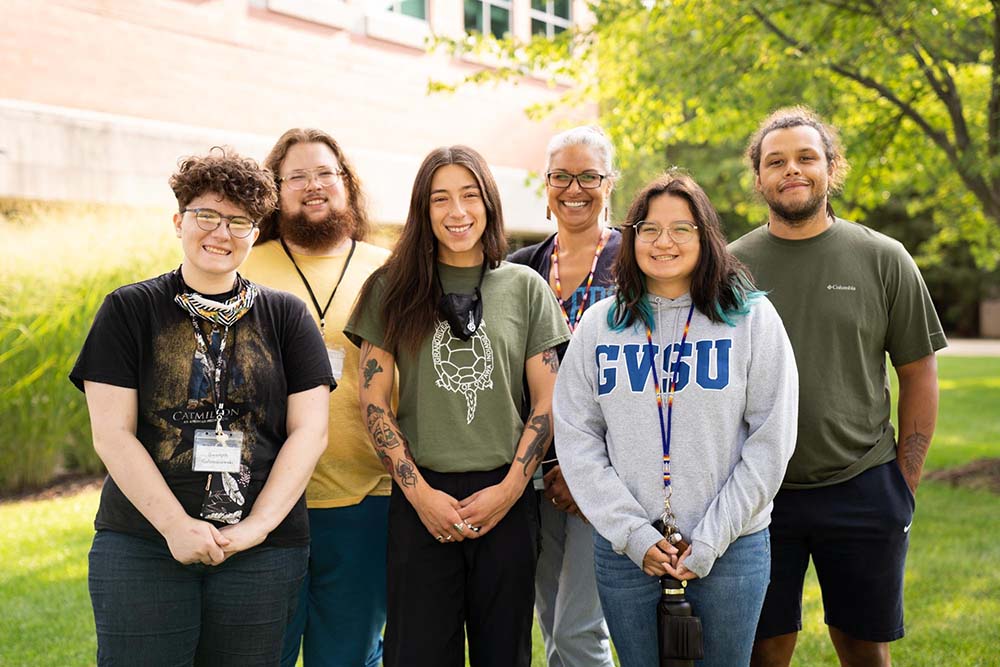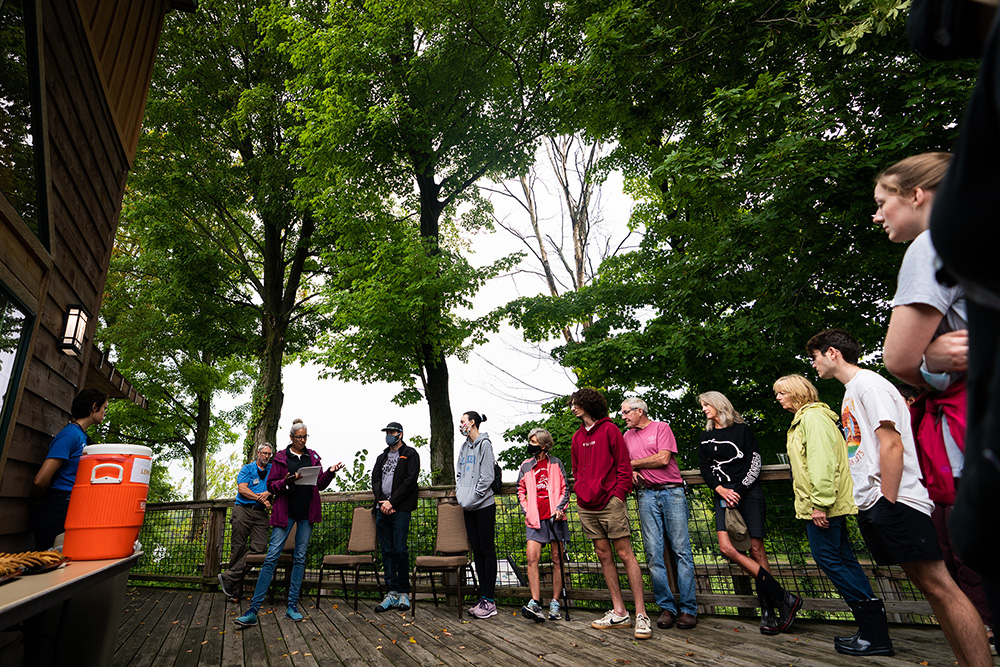
- Details
- By GRAND VALLEY STATE UNIVERSITY
Native American students new to Grand Valley State University immediately found their community on campus by participating in Laker Connection orientation, three days of programming in late August focused on helping diverse students find resources and succeed while in college.
Lin Bardwell, Native American student initiative coordinator, said one day during orientation — known as Maajtaadaa, an Ojibwe word meaning “let’s begin” — was devoted to identity.
"We built in a day devoted to the experiences of an Indigenous student, and our ways of being," Bardwell said. "We took time getting to know more about ourselves and talked about ways to manage the stress of being at an historically white institution and away from their community."
The orientations are the start of year-round Laker Connections programming. Native American students meet monthly to participate in activities and workshops, some common to all GVSU affinity groups. Students who attend year-round Laker Connections programming build closer bonds with other students, faculty and staff members.
 Events like a water festival in September gave Grand Valley students, faculty, and staff insights into the nearby Grand River and its significance to the Anishinaabe people.
Events like a water festival in September gave Grand Valley students, faculty, and staff insights into the nearby Grand River and its significance to the Anishinaabe people.
The university's Allendale Campus sits on the traditional homeland of the Three Fires Confederacy, the Ojibwe, Odawa, and Bodewademi tribal nations, along the shores of Owashtanong.
In mid-September, GVSU students, faculty and staff members held a water ceremony at the Grand Ravines Lodge, south of campus. Local Anishinaabe leaders, representing the Grand River Band of Ottawa Indians, delivered an oral history about Owashtanong — the far-flowing waters of the Grand River and its significance to the Anishinaabe people. The Anashinaabe ceremony was part of the West Michigan Environmental Action Council’s 18th Annual Mayors’ Grand River Cleanup.
Bardwell said Native students need a supportive and caring surrogate community while they are away from their home community.
"Our Native students often struggle in unfamiliar spaces, I know I did, so the purpose as we build this year-round program is to create a familiar and safe community both on campus and in the local community," she said.
With an eye on retention, Bardwell said research shows Native students leave higher education because of family, mental health and financial issues. Programming throughout the year for Native American students, she said, will center on relationship building.
"There is a lot of research out there stating that the more a Native/indigenous person identifies as a member of their Native community, the lower their retention rates are," Bardwell said.
Native students are a smaller subgroup among affinity groups at GVSU, but they have made their voices heard.
Four years ago, Grand Valley's Native American Student Association worked closely with Student Senate and campus administrators to declare Indigenous Peoples Day at Grand Valley. Grand Rapids Mayor Rosalynn Bliss created a similar proclamation last year for the City of Grand Rapids.
Below is a snapshot of other resources at GVSU for Native students:
- The Anishinaabe Student Leadership Camp offers Native American/North American Indigenous high schools students an opportunity to build their future as leaders.
- Maajtaadaa! Orientation: Offering students a great start to being Indigenous Lakers
- Mno’Chigewin Student Support Program: Offering academic, social and cultural meetings meant to build relationships on campus.
- Nwiijkiwenh Mentorship Program: Faculty and staff members volunteer to mentor students.
- The Native American Student Association is a registered student organization committed to providing a space for Native American/Indigenous students.
Learn more about these resources online at gvsu.edu/oma.
Help us defend tribal sovereignty.
At Native News Online, our mission is rooted in telling the stories that strengthen sovereignty and uplift Indigenous voices — not just at year’s end, but every single day.
Because of your generosity last year, we were able to keep our reporters on the ground in tribal communities, at national gatherings and in the halls of Congress — covering the issues that matter most to Indian Country: sovereignty, culture, education, health and economic opportunity.
That support sustained us through a tough year in 2025. Now, as we look to the year ahead, we need your help right now to ensure warrior journalism remains strong — reporting that defends tribal sovereignty, amplifies Native truth, and holds power accountable.
 The stakes couldn't be higher. Your support keeps Native voices heard, Native stories told and Native sovereignty defended.
The stakes couldn't be higher. Your support keeps Native voices heard, Native stories told and Native sovereignty defended.
Stand with Warrior Journalism today.
Levi Rickert (Potawatomi), Editor & Publisher
